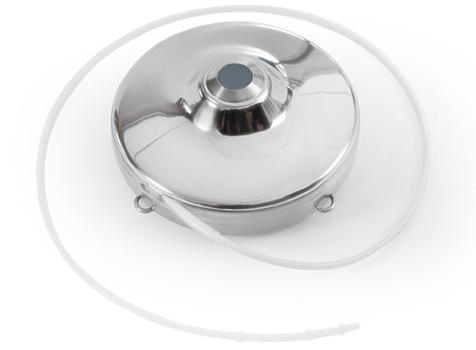Principles of HAI Therapy
Principles of HAI Therapy
Principles of Hepatic Artery Infusion Therapy
Hepatic Artery Infusion (HAI) therapy leverages the unique anatomy of the liver and properties of floxuridine to deliver high doses of regional therapy safely and effectively to tumors in the liver, limiting toxicity elsewhere in body.
While normal parenchyma is perfused primarily by the portal vein, liver metastases derive their blood supply from the hepatic artery.
See how it works

HAI therapy delivers chemotherapy directly into the liver via the hepatic artery, resulting in concentrations of the drug in liver metastases that are ~400 times higher than those achieved by IV administration 1.
First pass liver metabolism of ~97% and a half-life of ~10 minutes, results in minimal systemic exposure and toxicity of floxuridine.
Patient Selection Considerations for HAI Therapy2

- Histologically confirmed CRC or IHCC with radiographic or pathologic evidence of tumors in the liver
- Fit to undergo a major abdominal operation (Eastern cooperative Oncology Group (ECOG) 0-1)
- No clinical, laboratory or radiographic evidence of portal hypertension or portal vein thrombosis
- Preserved hepatic function, total bilirubin <1.5 mg/dL
- Favorable hepatic anatomy (patent GDA with adequate length and caliber)
- Any patient that has been resected and has preserved hepatic function
HAI Therapy Process

HAI therapy requires close collaboration of multidisciplinary teams and shared decision making between a patient’s medical and surgical oncologists, with the medical oncologist in charge for the duration of the treatment.
- HAI therapy is typically initiated 2-4 weeks postoperatively depending on the application
- HAI pump is refilled every two weeks alternating floxuridine and heparinized saline
- Bi-weekly refills can be administered by trained medical oncology staff/infusion centers, floxuridine dosing adjustments made at each refill
- LFT monitoring and other lab testing performed at each refill
- Upon conclusion of HAI therapy, the patient will continue receiving periodic refills of heparinized saline
- If the patient does not continue therapy for an extended period of time, glycerin injection may be placed in the pump, slowing the HAI pump flow and allowing for “drug holiday” for up to several months between refills
- Pump may be kept implanted indefinitely in case of recurrence

Role of the Medical Oncologist
1 Erminger W et al Seminars in Oncology, (1983) 10:2 176-182; 2 Creasy, et al. Ann Surg Oncol (2020) 27:5086–5095
HAI Therapy
Clinical Evidence
Intera 3000 HAI Pump
24/7 Clinical Call : USA & Canada (800) 660-2660
WS-1009 Rev A
© Copyright 2023 Intera Oncology.
All Rights Reserved. Designed by WollnerStudios.
HAI Therapy
Clinical Evidence
Intera 3000 HAI Pump
24/7 Clinical Call : USA & Canada (800) 660-2660
WS-1009 Rev A